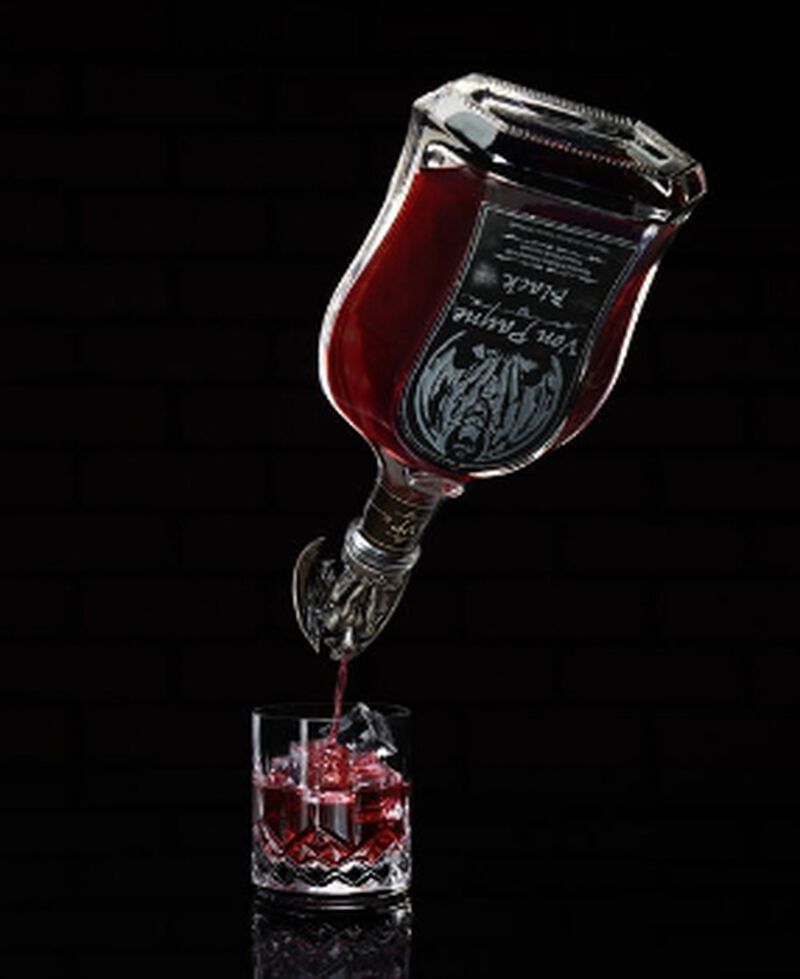
Von Payne Black Whiskey
Whiskey
Behind the Brand
Lee Diaz, ReserveBar Staff Writer
There are a countless number of paths that have led some to become distillers and blenders focused on producing astounding whiskies. It is in finding that balance between science and art, and in understanding the nuances within this creative process that something truly special is developed. To learn more about this work of blending and to discover her own path leading into the world of whiskey, we ventured to Waco, TX to sit down in the blending room with Emma Crandall, Blender at Balcones.
I actually never anticipated that I would be in the whiskey industry; my background is in writing. And the first moment that I tried whiskey, I was fascinated. And so that's how I switched gears – the fact that there was so much potential and variety in this whiskey avenue, and that I could be really nerdy with it, and then also bond with friends or family members over a glass of whiskey.
That kind of dichotomy of the science and the creative community was very appealing to me. That launched me into seeking out opportunities in this space, and now I’ve been in the industry for about seven years and have had various roles and positions within the industry. When I was writing, it was mostly freelance work, so it was kind of easy for me to pivot because I wasn't super tied into a company at that time.
I started with hosting whiskey tastings for private parties and events, and I really loved the community aspect of that work. But then I was hired at a craft distillery and was focused on cask management for their sourced whiskey. In that work I was maintaining samples and watching over the journey of those barrels once they got to us. It was then that we would see that, “this one would be really good for a finish or this one would be good for our blend,” and I got fascinated with the blending aspect from there.
I also distilled, but blending is very creative for me – it's art and a little less structured, and there’s a science to it, which even that doesn't sound right, because there's so much science in every aspect of the production process. It was in helping with the blending part where I realized that this was the direction I wanted to go. I knew that, coming from that role, I wanted to find something where I could dive deeply into the blending piece and not be so split in my attention into different responsibilities. And yeah, I feel really lucky to be here.
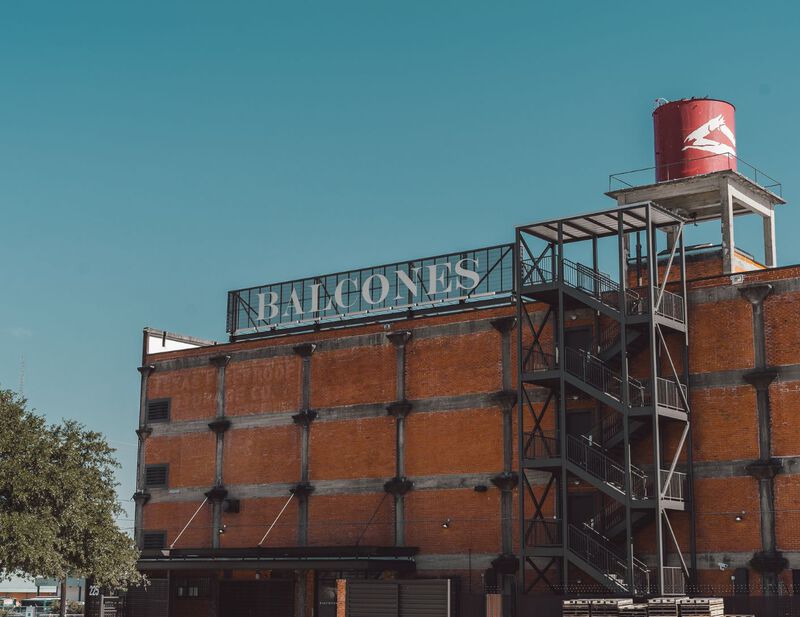
I had my ears and eyes open for opportunities. And I actually just reached out because I had heard they were hiring, but I didn't quite know for what roles. And so I reached out to Gabe and Thomas and just said, “Hey, I don't know if you're hiring for blending help, but I'm putting my name in the hat. If you are, I would love to work with you guys; I just think this would be an amazing opportunity. And I'd love to chat if you're open to contract or full time blending work.”
As it turns out they were hiring, and so that started the conversation. I had met a lot of people here before and the previous distillery I worked at sourced single casks from Balcones. So I had working relationships and communications with Gabe and Thomas, and then I had also met Jared and Gabe out at a lot of industry events and had even spent a few days here a couple years before they hired me to just learn from them and blend with them for a little bit. This wasn't a completely blind hire and I believe that kind of trust and connection that developed ahead of time helped move that interview process forward. And they ended up hiring me and even still, l can't believe that I'm here.
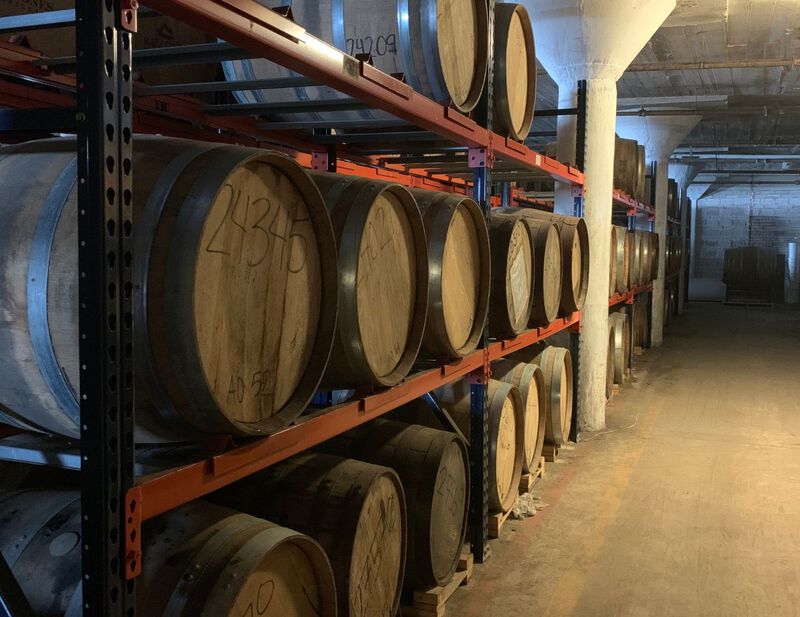
I had always been a fan of the whiskey as a consumer. Balcones was one of the first Texas whiskies I was introduced to; it was Texas 1 specifically, and I absolutely loved it. I liked the bold flavors and the fruit. I had originally come from being a Scotch drinker, and having an American single malt, a Texas single malt, that connection drew me into the whiskey.
And then, the more I got to know the people who work here over time; to see just how intentional and kind and generous everyone is. This all made me realize that not only did I absolutely love what they're making, but being here would be a really great opportunity to learn and grow from the people here through every production step. Everyone is again very generous with their knowledge, willing to share answers and helping in this kind of environment. I was desiring to learn more and grow, and I realized that being here would help me do that.
I actually really love that question because it's really meaningful to me, and it was hard to step away from that industry and that path I was taking. And I think I made the right switch because it was always that creative thread and that idea of creating that I was drawn to. I didn't realize until after I left that industry of writing, that it was the creativity that I was drawn to in the first place. I still write creatively for myself, and it's something I've done since I was a little kid and it's something I will do until the day I die.
In that thread of creating, instead of words being the medium, now whiskey is that medium. I get to create something that people are going to share with their friends and their families; they're going to celebrate, they're going to mourn with it, they're going to bring a bottle of whiskey into their home that I got to be a part of creating and developing. And that connection is really impactful for me – just being able to create and be creative, and even now, I don't even know how to put it into words entirely.
I never would have thought of whiskey being such a creative avenue before, and I'm really glad that I found it. I still have a private, creative space at home, but in work, having the unique aspect of creativity is so important to me.
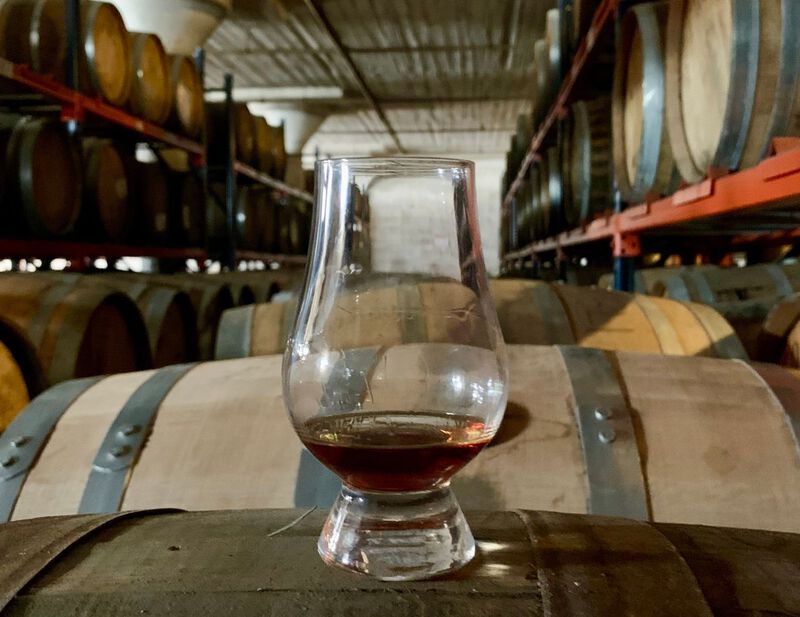
At times I get inspired, and honestly, a little intimidated by people who come from chemistry backgrounds, or a scientific process-oriented direction. I know that there are pieces of my knowledge in this process that are lacking, and my brain kind of doesn't work that way. I openly struggle with those pieces; it takes me a really long time to study and do hands-on experiences to grasp all of the technical aspects of the whiskey production process. So having this writing-creative background, I think there are strengths and flaws to it.
I'm not a very structured person, and I'm open to a lot of different ways of trying new approaches and handling blending, and I don't get stuck in a process. So I think that is helpful with blending specifically – there really isn't a right or wrong way to do it. There are a lot of ways to do it, and certainly sometimes there might be some better ways to do it, but you can get to an end result with blending through a lot of different pathways. That creative writing background in this ability to work with the medium through to the end is maintained in this industry too.
I don't know that it's a unique perspective – I feel like there are probably a lot of people who are finding themselves in this industry that come from a lot of different other industries. And I think that any of the various backgrounds you find at a distillery are really fascinating. For instance, I have a friend who comes from the world of fashion, and she's a distiller now. I find that fascinating, and I just want to dig into her brain and ask what is the impact and what are you taking from that and carrying here?
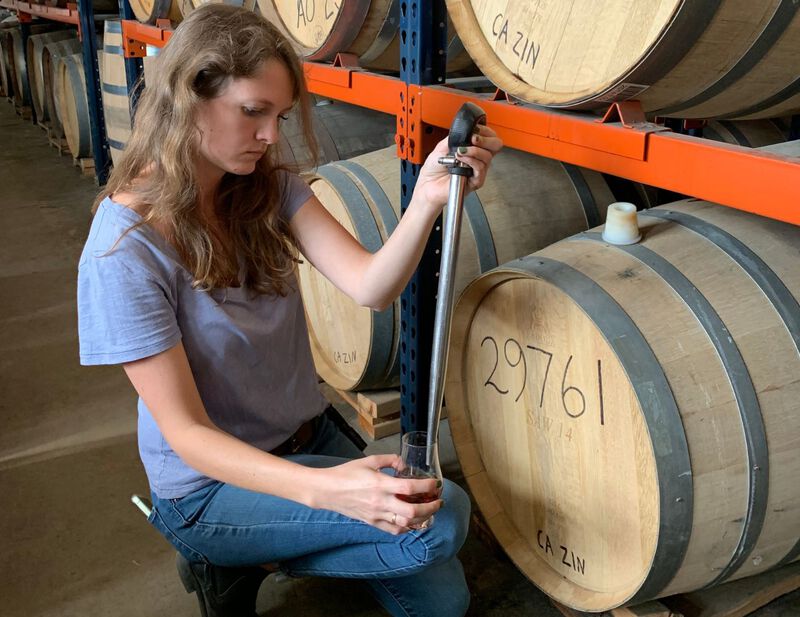
In general, I'm not a very routine person. I do like to perform my sensory work in the morning. I try to get as much done as I can before lunch because I like having a fresh palate and I place a lot of value in that. What sensory might look like is when I am working on a blend, we will have a blend out on the counter, or we'll have a bunch of individual barrel samples, and we'll take the samples and proof them to bottling strength, if we know the strength ahead of time like a core release. Lineage, for instance, is 47% ABV, so we will proof our samples to that and complete sensory analysis on each one.
To do this, we'll take notes on the aromas we're getting, on the flavors we're getting on the palate, on the general experience and feel of the nose, the palate and texture with the finishes. We will also take notes if there are any flaws that we find that we need to mitigate and help the cask along in its maturation. And we have a quality scoring system that we do. So we'll rate the barrel to help us build the blend once we've gone through the initial grading. It's a very similar idea to when we're grading single barrels as well, we treat it the same way, taking notes on the nose, and the taste, texture, the feel. I find that sometimes I go through different modes of taking notes, where sometimes I'm very specific. And then there are other times when it's more of an experience or feel. In both respects, this process comes with a lot of water. We also spit everything out, because we're working and want to be healthy humans.
There's a lot of data collection and paperwork and spreadsheets involved. I try to save that for more the afternoon when I've already eaten lunch, and my palate is a little more fatigued, and sensory might not be the best. We keep track of the data we collect, like barrel quality scores from when we grade them over time. It's a nice balance between the technical structured data standpoint to the more right brained sensory aspect.
I also find a lot of value in sampling as many different kinds of whiskey from as many different producers as possible. Sometimes we'll do that here where we'll have something out that we haven't had before and talk about it together. I'm just always thinking about what I'm tasting. Anytime I pick up a glass, I'm considering the nose, and thinking about the taste, the experience and the finish – and then I’ll enjoy the drink. That kind of habit of always paying attention to what I think is a really good practice that helped me develop my palate more and not just get stuck in what is called “cellar drift”. I think that is what they call it when you're doing so much sensory work at your own distillery, that it's what you taste all the time, without branching out and seeing what's out there. That practice of just branching out to see what's out there is really valuable.
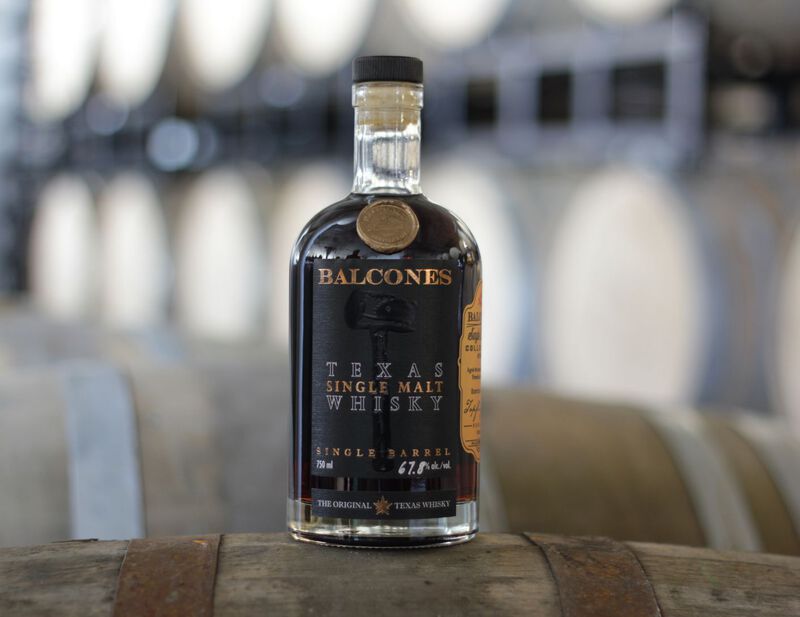
It tends to happen when I'm doing my barrel grading – then a cask just stops me, and I just want to live in it, whether it's the nose, or the palate. When I pause because either the aroma, or the flavor, or the general experience that it gives is shocking or different or unique or just really dang good, that’s usually when I'll be like, “Okay, this might be a single barrel.”
There are a few of us, such as Gabe and Alex who are going through looking for single barrels, or Jared will find them. For each person, it might be a little different. For me, when I find something I think of as a single barrel, it's because it stands out from our typical profile in what it is. If it shines as a unique kind of experience to what we usually do, that is a flag for me that it's just a magical barrel. Somehow in the mix, it just kind of went off and did its own thing, which is really fun to think about. Also, even if it is very in-line with our profile, but it's just so complex and complete, that would be another contender.
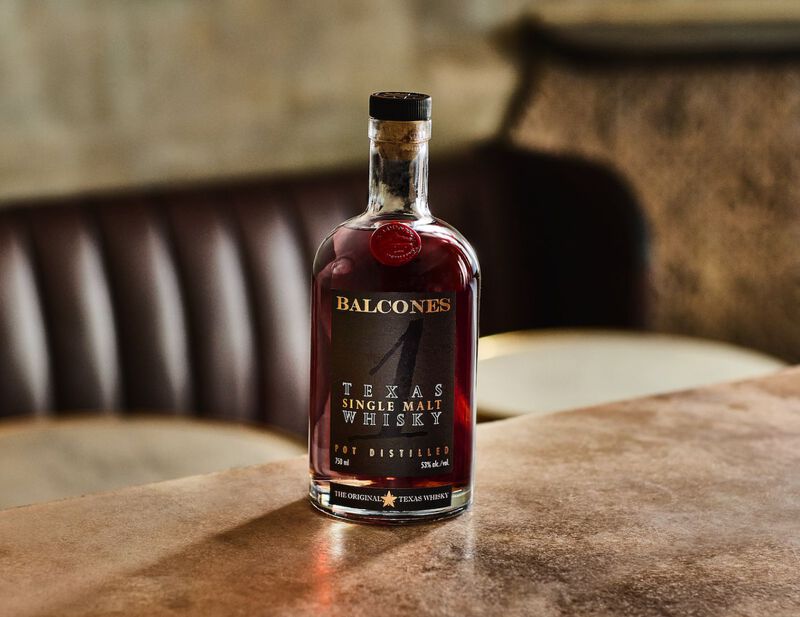
We are in this very interesting Venn diagram overlap of Texas whiskey and American Single Malt, which are both growing categories. Texas whiskey being only fifteen years old, and the American single malt industry being older but not having the same kind of longevity that the bourbon industry does. I think we’re in a unique space to have that overlap. And our country is massive, with so many microclimates and regions that offer so much variety to whiskey in the US. So, being able to see what other American Single Malt distilleries are doing, and more so, seeing what other Texas single malt distilleries are doing in this larger southern region, and creating space in that is remarkable.
I think we are trying to figure out how we can create more delicate profiles too – there's a stereotype of Texas whiskey that it must be big and burly, and that's just not true. There's so much variety in the state of what people are making. And we're definitely doing a little of both. We have Brimstone, but then we also have Lineage and Baby Blue. I like that variety in our profile, while exploring how we can work with our climate to manage having whiskey in a cask longer, not for the sake of being able to say we have an older age statement, but more just to see what the whiskey will do.
What will happen when our distillate gets to rest and really goes through all of the processes that happen during maturation without extracting so quickly. That's what we're exploring and it's cool checking on barrels that are three or four years old and they are not as far along as they used to be because we're experimenting and trying new things, such as using larger barrels or trying lower entry proofs. It’s cool seeing those things come to fruition, working and learning from those processes, and learning how to tweak it and improve it to see what our whiskey will do.
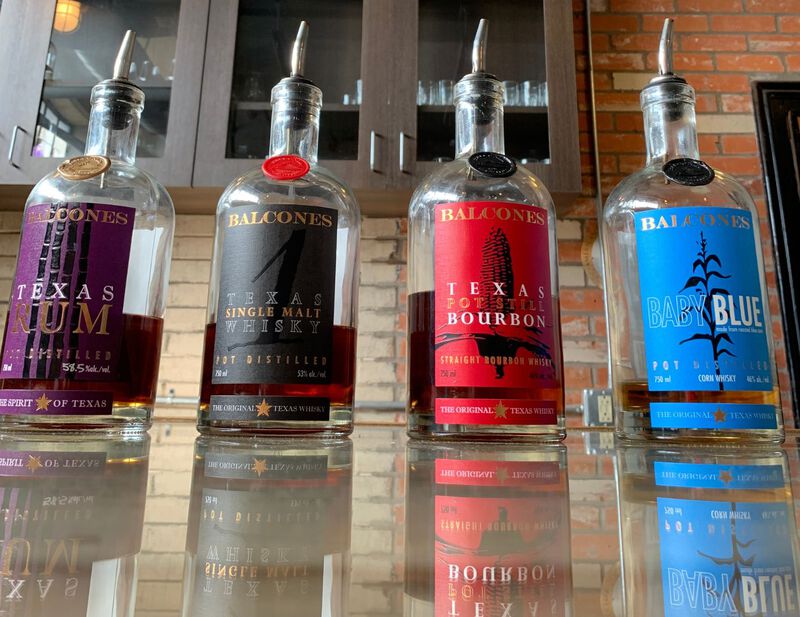
I love shepherding people with whiskey, and so I love this question.
For a new whiskey drinker, I would definitely recommend starting with Baby Blue or Lineage, hopefully both. With Baby Blue, you have the fun tie-in of that being our first released whiskey, so you have this new whiskey, new Texas whiskey kind of relationship there. It's also very approachable if you're not used to drinking hard alcohol while still being complex and having a lot to offer. The same can be said with Lineage. It's a little more dense and bold than Baby Blue, but it's still a lighter kind of single malt profile. It gives you a glimpse into our passion of making American Single Malts. And it's just a very fruity, sweet kind of dense experience that I think a lot of people would like, whether they're familiar with whiskey or not. Then from there, you should move to trying Texas 1 and our Rye, which both have those bolder profiles: a little more proof, a little more density, deeper flavors to them.
If you’re not new to whiskey, and you're just new to Balcones, I definitely recommend Lineage and Texas 1; just try those two together. Depending on the kind of whiskey history you come from and what you typically enjoy drinking, you might like those kinds of lighter profiles. And so that avenue of having Lineage there is a great way to start. But then also having the Texas 1, with its bold profile next to it is key. It's just so important to get American Single Malt in front of people. And so if people are new to Balcones, you should try these first – this is where our heart lies. We love making American Single Malt, and with these, you can see two very different versions of it from one distillery in Texas. It's Texas whiskey that kind of represents a few different big categories. Then from there, try Baby Blue, our Rye, and walk into the next level of our core. This approach would put malt in the forefront, followed by the rest of our core and then try Brimstone. It is a very similar path to the beginner but swapping Texas 1 and then based on profile versus whether it's malt or not.
I think the open mindedness of the consumer impacts the tasting route to take. In both paths, you may finish with Brimstone if you want to be really experimental and aggressive – in that case, just go for it. Otherwise, I’ve heard it's great to cook with. We have a lot of staff members who use Brimstone in recipes, which is really cool.
None of it really comes from me. That is one creative avenue that I am not great at, coming up with cocktails and that sort of thing. But our bar staff is amazing, and they come up with some really amazing concoctions. This might surprise you, but Baby Blue as a replacement for tequila in margaritas is really interesting and works really well, which I never would have thought of myself. I love margaritas. And so in our tasting room, I think they call it an “Imposterita”, and I'll get that. Also, Lineage works really well in highballs – it just accents the flavors and it's very refreshing. And it's so hot in the summer here that I really just enjoy taking Texas 1 on a large cube of ice and I'll drink that in the summer.
I just think that we are a bunch of creative whiskey nerds. And if people resonate with that mentality, that curiosity and exploration, and place a priority on people and storytelling, I think they'll resonate with Balcones. I hope that they do. And I hope that they love our whiskey – that our whiskey will find a home in their life. I truly love what I do; I'm very grateful for my job and that I get to be creative in this role. I still feel like I'm a fan of Balcones, and I think that's a really magical place to be in. So I hope people find us and resonate with this work. Cheers!